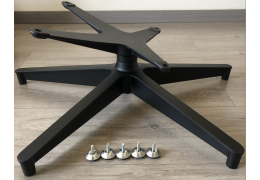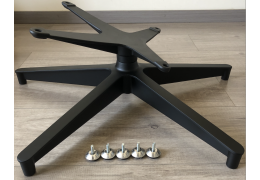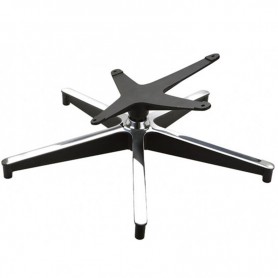Choosing the right replacement parts for your Eames Lounge Chair requires more than just finding a compatible fit....
Future Trends in Office Chair Components and Sourcing
Future Trends in Office Chair Components and Sourcing
As the office furniture industry evolves, staying informed about future trends in office chair components and sourcing can help businesses maintain a competitive edge. Understanding these trends allows suppliers and manufacturers to adapt to market demands and customer preferences. Here are some key trends to watch in the coming years.
1. Increased Focus on Sustainability
Why is sustainability important?
The growing emphasis on sustainability is reshaping the office furniture landscape. Businesses are increasingly seeking eco-friendly materials and sustainable manufacturing processes. Key points to consider include:
Recyclable Materials: Suppliers are adopting recyclable or biodegradable materials for chair components, reducing environmental impact. Look for companies that source materials responsibly, such as Steelcase, which has committed to sustainability in its products.
Energy-Efficient Manufacturing: Manufacturers are implementing energy-efficient processes to minimize their carbon footprint. Engaging with suppliers that prioritize sustainability can enhance your brand’s reputation.
2. Ergonomic Innovations
How is ergonomics evolving?
The importance of ergonomic design in office furniture is becoming more pronounced as remote work becomes the norm. Future trends in ergonomics include:
Advanced Adjustability: Expect to see office chairs featuring more adjustable components, allowing users to customize their seating experience. Innovations such as automatic lumbar support adjustment and smart sensors to monitor posture are gaining traction.
Health Monitoring: Some manufacturers are exploring the integration of technology that can monitor user posture and health metrics, providing real-time feedback to promote healthier sitting habits.
3. Smart Office Solutions
What are smart office solutions?
The rise of smart office technology is influencing office chair design and functionality. Trends include:
Integrated Technology: Chairs with built-in charging ports, Bluetooth connectivity, and smart features are becoming popular, enhancing the user experience. For example, some chairs are now equipped with sensors that can alert users to take breaks or adjust posture.
Remote Management: Companies are leveraging IoT (Internet of Things) technology to manage office environments remotely. This includes tracking usage patterns of office chairs to optimize space and ergonomics.
4. Customization and Personalization
How is customization impacting sourcing?
Consumers are increasingly looking for personalized products, leading to a surge in demand for customizable office chair components. Key trends include:
Tailored Designs: Suppliers are offering more options for customization in terms of color, material, and features. This trend allows businesses to create unique products that reflect their brand identity.
User Preferences: Businesses may seek suppliers who can accommodate specific user preferences, such as adjustable seating heights, armrest designs, and cushion firmness.
5. Supply Chain Innovations
How are supply chains evolving?
The COVID-19 pandemic highlighted vulnerabilities in global supply chains, prompting a shift toward more resilient and localized sourcing. Trends to watch include:
Nearshoring: Companies are reconsidering their sourcing strategies, often opting for suppliers closer to their operational base to reduce lead times and transportation costs. This approach can enhance supply chain resilience.
Technology-Driven Solutions: Automation and digital tools are increasingly being adopted in supply chain management, improving efficiency and transparency. Companies are using software for better inventory management and order tracking.
Conclusion
Staying abreast of future trends in office chair components and sourcing is essential for businesses aiming to remain competitive in a rapidly evolving market. By focusing on sustainability, ergonomic innovations, smart technology, customization, and supply chain improvements, companies can enhance their offerings and meet the changing demands of consumers.















Latest comments